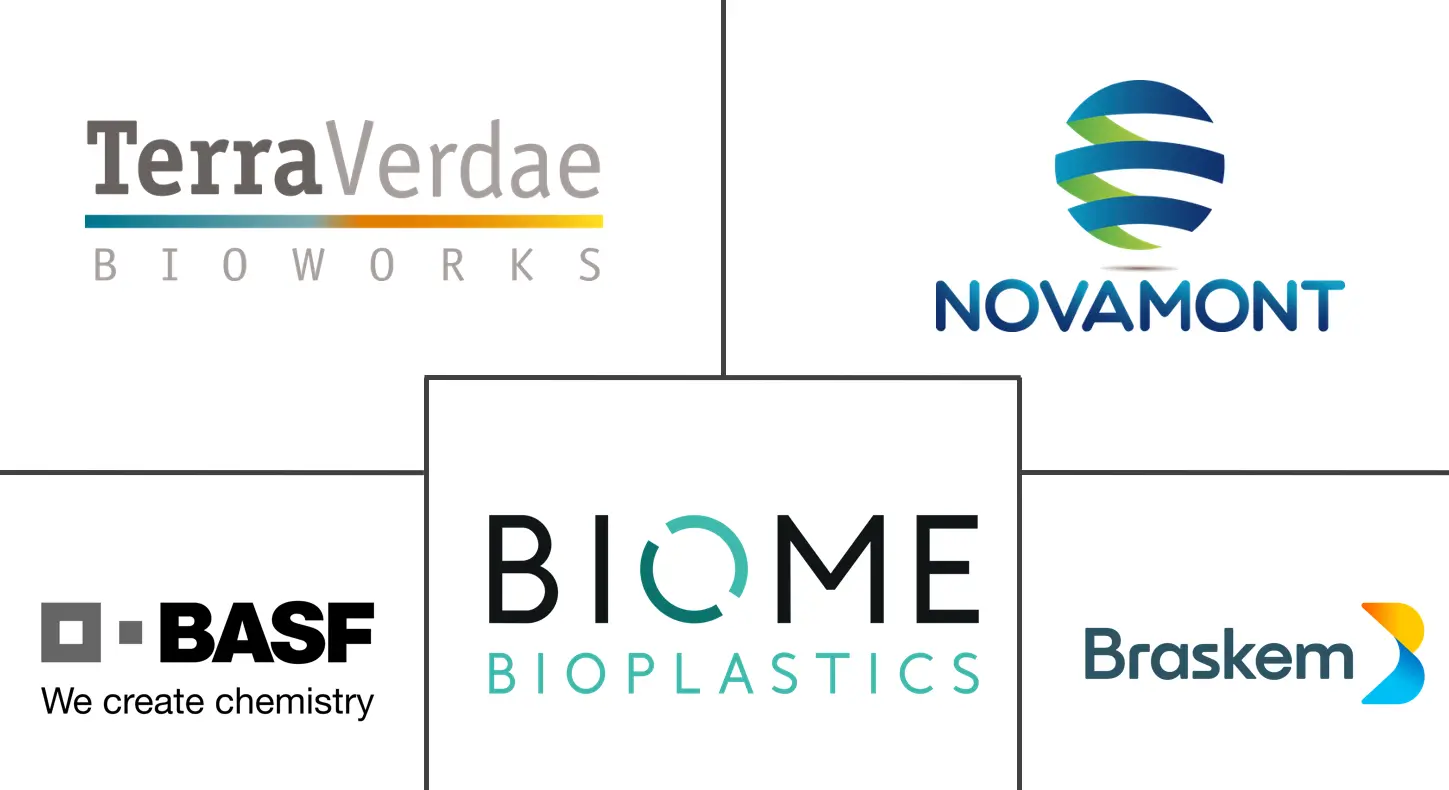Canada Bioplastics Market Size and Share
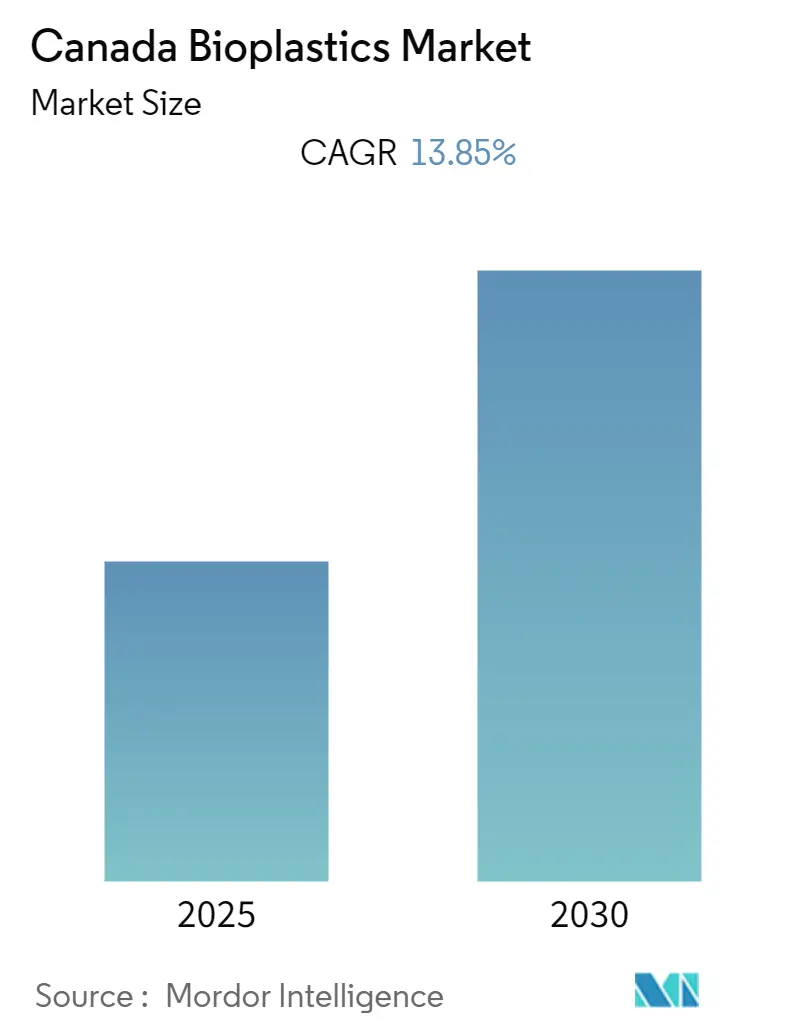
Canada Bioplastics Market Analysis by Mordor Intelligence
The Canada Bioplastics Market is expected to register a CAGR of 13.85% during the forecast period.
- The COVID-19 pandemic affected several industries negatively. The lockdown in Canada caused disruptions in production, as well as industrial activities, and restrictions on freight transportation, disturbed the supply chain. However, the conditions started recovering in 2021, restoring the market's growth trajectory.
- The rising demand from the flexible packaging segment and favorable regulatory policies in Canada are major factors driving the growth of the market studied.
- However, the availability of cheaper alternatives to traditional plastics will likely restrain the studied market's growth.
- Nevertheless, future prospects in non-packaging solutions are likely to create lucrative growth opportunities for the market.
Canada Bioplastics Market Trends and Insights
Flexible Packaging Industry to Dominate the Market
- Bioplastics are used in flexible packaging, as they are not harmful to nature, and few are easily degradable as well.
- They are used in packaging films for food items, medicines, beverage bottles, packaging films, and packaging of non-food products, such as napkins and tissues, toilet paper, nappies, sanitary towels, cardboard, and coat paper for food wrapping paper, and coated cardboard to make cups and plates. Moreover, they are used in flexible and loose-fill packaging.
- The consumption of bioplastics is increasing in making plastic bags, as they are nature-friendly, and for organic waste collection bags, which are majorly used in hospitals, hotels and restaurants, commercial and retail outlets, and houses.
- The Government of Canada encourages measures to produce alternatives to plastic to reduce waste. Under this initiative, the government announced a USD 1 million investment to BOSK Bioproducts Inc. as part of the second phase of the Bioplastics Challenge in April 2021. Courtesy of the challenge, the government aims to help small businesses reduce pollution by turning forest-based residue into sustainable plastic materials.
- As for the demand drivers for flexible packaging, the food packaging and e-commerce industries have grown tremendously post the onset of COVID-19.
- According to the FCC Food and Beverage Report 2023, meat product manufacturing sales increased over 9% year-on-year in 2022, largely due to stronger domestic sales, which were up by 12%, led by food service growth.
- The food service industry is an important market for baked goods, and 2022 only reinforced this industry feature. Restaurant sales increased by 41% in 2022 and fast-food sales by 14%. Bakery and tortilla manufacturing sales increased 18% year-on-year to USD 16.3 billion in 2022. Cookie and cracker sales increased 31% year-on-year, while bread and bakery product sales increased 16%.
- As for e-commerce, post the pandemic, electronics is the leading product category amongst Canadians to purchase online. Fashion is the second largest product category purchased online in Canada. Both these categories combined make up more than 50% of the e-commerce sales in Canada.
- In 2022, retail e-commerce in Canada generated over USD 52 billion in revenue. According to Statistics Canada, the annual retail sales percentage through e-commerce has been increasing across all categories in Canada, with Electronics (31%) and Clothing(19%) leading the way in 2022. Other categories like furniture and sporting goods have also recorded double-digit shares.
- With the food and beverage industry growing at a rapid pace and people adopting and preferring online shopping, starting from FMCG products and food to medicines, electronics, and others, the demand for flexible packaging in e-commerce is expected to offer several growth opportunities in the country over the coming years.
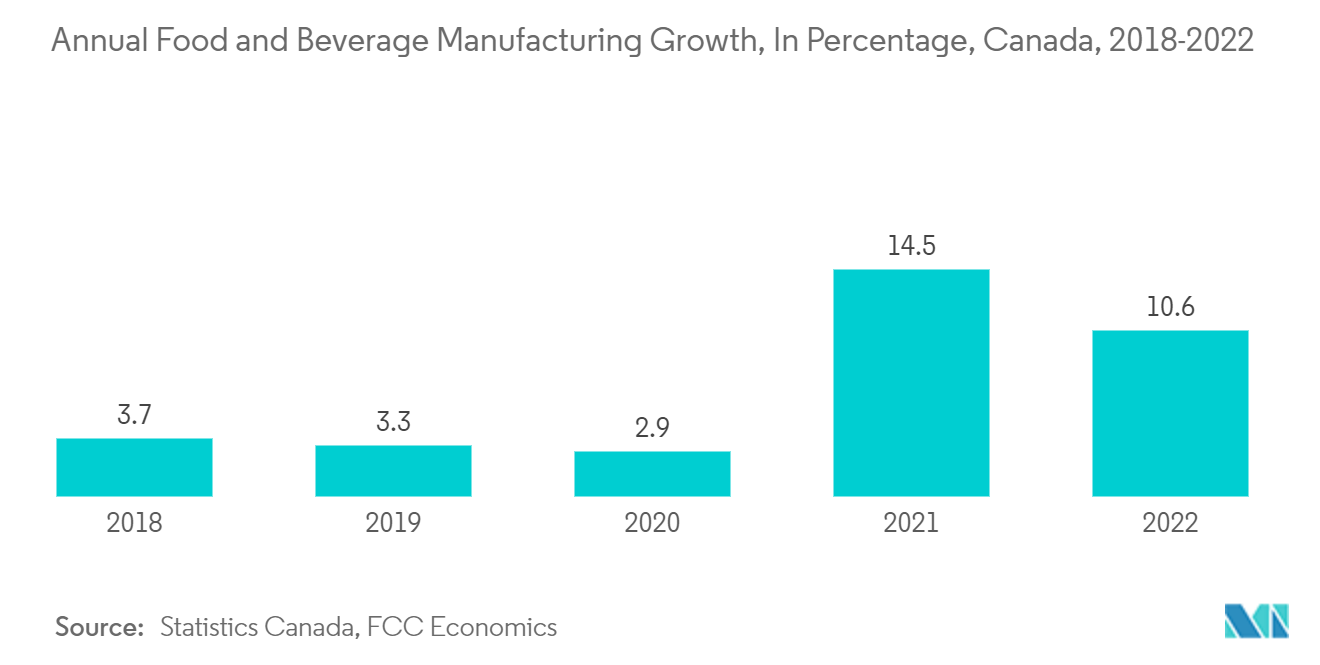
Bio Polyethylene Terephthalate (PET) is amongst the leading Product Types
- Bio-PET is widely used in bottling and packaging applications. The demand for bio-PET is increasing rapidly in Canada as companies want to reduce their dependency on fossil-fuel-based products. In addition, the demand from consumers for bio-based products is also increasing, and the move has also been promoted by the government of Canada.
- The majority of fossil-based PET is used for bottles, including soft drinks, alcoholic beverages, detergents, oils, and cosmetics. However, it can also be used as a film in food packaging.
- Bio-polyethylene terephthalate, Bio-PET, is the most common bio-based plastic. It is derived from a sugar-based ethanol product called ethylene glycol, which is 30% of the total compound, and the rest 70% remains oil-based. The 30% is mono ethylene glycol (MeG) made from sugar molasses, a by-product in the sugar industry, and 70% is petroleum-based terephthalic acid (PTA).
- There have been efforts to move to a 100% bio-based PET, and the industry is aiming at replacing PTA with completely bio-based PET.
- As a result, companies including Coca-Cola, Procter & Gamble, Nike, Heinz, and Ford Motors have formed a strategic partnership called the Plant PET Tech Collaborative to accelerate the development of 100% bio-PET. These large investors are the reason that Bio-PET is currently the most significantly used bio-based plastic.
- As of 2022, GoodLeaf Farms, a farm produce company, has switched to more environment-friendly Bio-PET clamshell packaging for its line of microgreens and baby greens, supplied by British Columbia-based Good Natured Products which contains 33% post-consumer recycled plastic and 20% sugarcane.
- As of March 2023, Good Natured Products has displaced more than 30 million pounds of plastics by replacing them with bioplastic packaging.
- Courtesy of the recent developments in the market, the support of the local government, and environment-conscious consumers, the demand for Bio-PET is likely to grow in the study period.
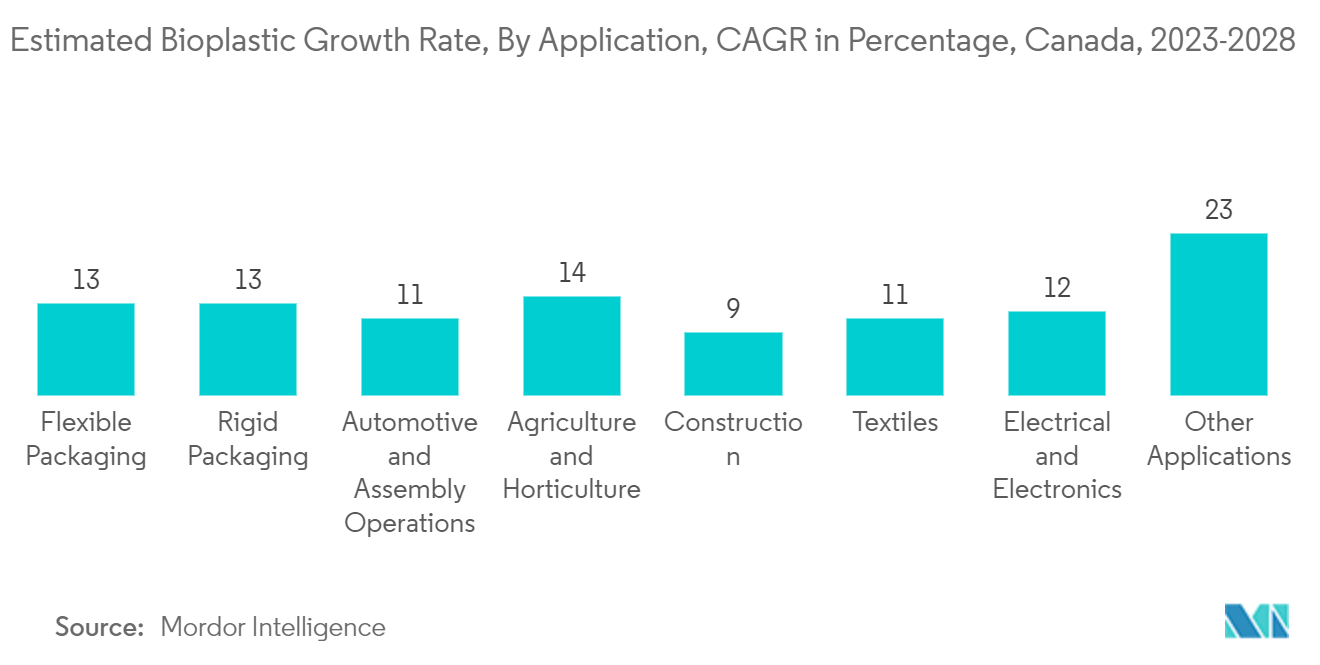
Competitive Landscape
The Canada bioplastics market is partially fragmented in nature. The major players in the market (not in any particular order) include Braskem, Novamont SpA, BASF SE, Biome Bioplastics Inc., and TERRAVERDAE BIOWORKS INC., among others.
Canada Bioplastics Industry Leaders
-
Biome Bioplastics Inc
-
BASF SE
-
Novamont SpA
-
Braskem
-
TERRAVERDAE BIOWORKS INC.
- *Disclaimer: Major Players sorted in no particular order
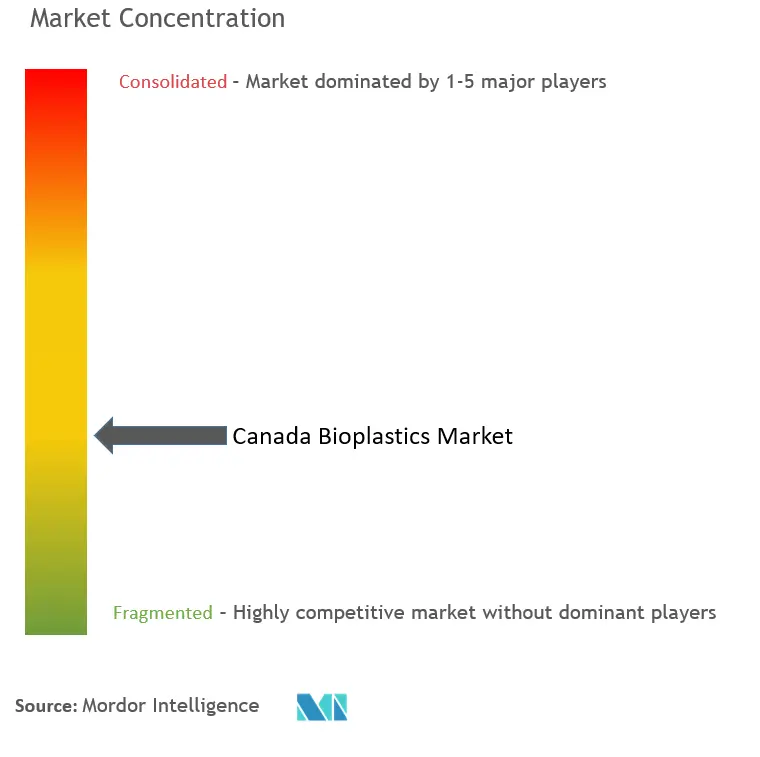
Recent Industry Developments
- May 2023: Bosk Bioproducts was granted an "OK Compost" and "OK Biobased" certification by TÜV Austria for its REGEN bioplastics range of products. The company's products are now industrially compostable as well as four-star biobased certified.
- March 2023: The government of Canada funded the Afri-Plastics Challenge initiative, which is aimed at reducing the amount of plastic waste both on land and in the ocean in and around the African continent. As a part of this challenge, bioplastics made from invasive plants from Lake Victoria were amongst the recipients of GBP 4 million (USD 5.07 million) in funding to reduce plastic pollution.
Canada Bioplastics Market Report Scope
Bioplastics are plastics produced from renewable sources such as woodchips, sawdust, recycled food waste, corn, and sugarcane to name a few, and can be used as an alternative to traditional plastics to reduce waste and pollution.
The Canadian bioplastics market is segmented by type and application. By type, the market is segmented into bio-based biodegradables (starch-based, polylactic acid, polyhydroxyalkanoates, polyesters, and other bio-based biodegradables (polybutylene succinate (Adipate) (PBS(A)) and cellulose-based plastics)) and bio-based non-biodegradables (bio polyethylene terephthalate, bio polyethylene, bio polyamides, bio poly trimethylene terephthalate, and other non-biodegradables (polyethylenefuranoate (PEF), bio polyols, bio polypropylene, and bio polyurethanes)). By application, the market is segmented into flexible packaging, rigid packaging, automotive and assembly operations, agriculture and horticulture, construction, textiles, electrical and electronics, and other applications (coatings, adhesives, consumer goods, and healthcare).
For each segment, the market sizing and forecasts are provided on the basis of volume (tons).
| Bio-based Biodegradables | Starch-based |
| Polylactic Acid (PLA) | |
| Polyhydroxy Alkanoates (PHA) | |
| Polyesters (PBS, PBAT, and PCL) | |
| Other Bio-based Biodegradables (Polybutylene Succinate (Adipate) (PBS(A)) and Cellulose-based Plastics) | |
| Bio-based Non-biodegradables | Bio Polyethylene Terephthalate (PET) |
| Bio Polyethylene | |
| Bio Polyamides | |
| Bio Polytrimethylene Terephthalate | |
| Other Non-biodegradables (Polyethylenefuranoate (PEF), Bio Polyols, Bio Polypropylene and Bio Polyurethanes) |
| Flexible Packaging |
| Rigid Packaging |
| Automotive and Assembly Operations |
| Agriculture and Horticulture |
| Construction |
| Textiles |
| Electrical and Electronics |
| Other Applications (Coatings, Adhesives, Consumer Goods, and Healthcare) |
| Type | Bio-based Biodegradables | Starch-based |
| Polylactic Acid (PLA) | ||
| Polyhydroxy Alkanoates (PHA) | ||
| Polyesters (PBS, PBAT, and PCL) | ||
| Other Bio-based Biodegradables (Polybutylene Succinate (Adipate) (PBS(A)) and Cellulose-based Plastics) | ||
| Bio-based Non-biodegradables | Bio Polyethylene Terephthalate (PET) | |
| Bio Polyethylene | ||
| Bio Polyamides | ||
| Bio Polytrimethylene Terephthalate | ||
| Other Non-biodegradables (Polyethylenefuranoate (PEF), Bio Polyols, Bio Polypropylene and Bio Polyurethanes) | ||
| Application | Flexible Packaging | |
| Rigid Packaging | ||
| Automotive and Assembly Operations | ||
| Agriculture and Horticulture | ||
| Construction | ||
| Textiles | ||
| Electrical and Electronics | ||
| Other Applications (Coatings, Adhesives, Consumer Goods, and Healthcare) | ||
Key Questions Answered in the Report
What is the current undefined size?
The undefined is projected to register a CAGR of 13.85% during the forecast period (2025-2030)
Who are the key players in undefined?
Biome Bioplastics Inc, BASF SE, Novamont SpA, Braskem and TERRAVERDAE BIOWORKS INC. are the major companies operating in the undefined.
What years does this undefined cover?
The report covers the undefined historical market size for years: 2019, 2020, 2021, 2022, 2023 and 2024. The report also forecasts the undefined size for years: 2025, 2026, 2027, 2028, 2029 and 2030.
Page last updated on:
Canada Bioplastics Market Report
Statistics for the 2025 Canada Bioplastics market share, size and revenue growth rate, created by Mordor Intelligence™ Industry Reports. Canada Bioplastics analysis includes a market forecast outlook for 2025 to 2030 and historical overview. Get a sample of this industry analysis as a free report PDF download.
